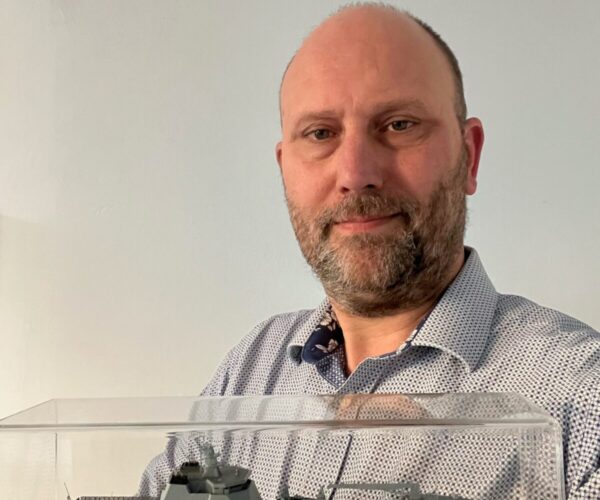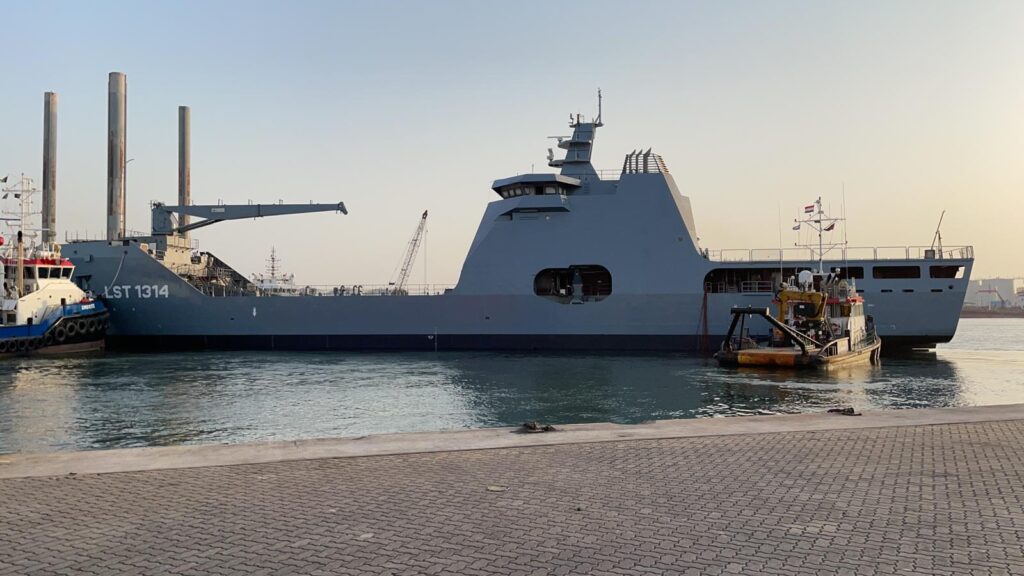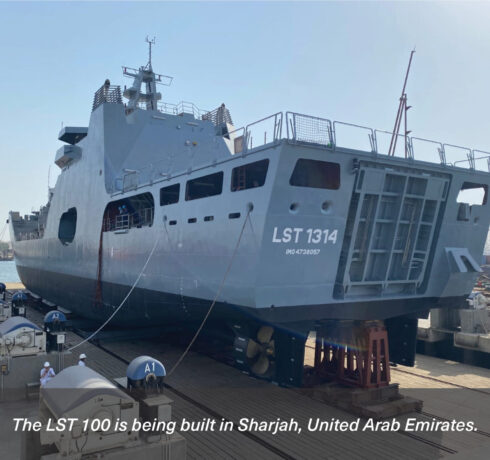The time has almost come: in March 2022, the brand new Landing Ship Transport 100 will be handed over to the Nigerian Navy in Sharjah, United Arab Emirates. The ship is almost ready and project leader Sander Boost is busy ticking off the last things on his to-do list. “The delivery of the ship is still on schedule, and I am confident that we will be finished by the end of March, but it mainly depends on the installation, the tests and the results of the combat systems.”
 Project Director Sander Boost.
Project Director Sander Boost.
The Remote Weapons System arrived in Dubai in the United Arab Emirates in late December 2021, where it is now waiting to be transported to the shipyard (Albwardy Damen), after a delay of almost a year. At the moment, the ship is still moored at the quay in Sharjah. Here, the weapons system is being installed, while the remaining issues from the first Sea Acceptance Trials (SAT) are also being resolved. The first SAT took place from 17 to 22 December 2021. “Due to Covid, we have not yet been able to carry out all the planned trials,” says Sander. “About 95 per cent of the Platform SAT has been done. Fortunately, we still have five days at the end of February and beginning of March for the remaining 5 per cent and the entire Combat SAT. After that second SAT period, we still have time to resolve any last remaining issues.”
“The biggest challenge was the project management of building a ship in a third country, one that wasn’t The Netherlands or the country of our customer. It made the project a bit more complex than we are used to.” Sander Boost
The Landing Ship Transport 100 is a versatile amphibious roll-on roll-off vessel with loading ramps in the bow and stern and a 25-tonne deck crane for loading vehicles and supplies. There is room on board for 32 crew members and the transport of 250 troops. The ship is designed in such a way that there is a central ‘highway’ on which vehicles to be used during a landing operation can be placed. This allows troops, vehicles and relief supplies to be brought ashore quickly and effectively, or vice versa, back on board the ship. The Nigerian Navy plans to use the ship for relief operations during (natural) disasters, other humanitarian operations and operations to safeguard and increase maritime security in the Gulf of Guinea.
 The LST 100 is a versatile amphibious roll-on roll-off vessel with loading ramps in the bow and stern.
The LST 100 is a versatile amphibious roll-on roll-off vessel with loading ramps in the bow and stern.
With the finish line in sight, Sander looks back on a challenging but wonderful project. “We are very satisfied with the sailing characteristics of the LST100 and how stable the ship is. The customer has told us many times how happy they are with the vessel and how it handled the first SAT. At the end of the day, that’s what we do it for,” he says. “The biggest challenge was the project management of building a ship in a third country, one that wasn’t The Netherlands or the country of our customer. There are always political challenges, of course, but when you build in the customer’s country, they can normally help sort out a lot of paperwork such as permits and so on. This time, the customer could not help us with that and that sometimes made the project a bit more complex than we are used to.”
After the delivery of the vessel, the LST 100 will sail to Nigeria. “During the voyage, a total of five Damen consultants and engineers will be on board, including the warranty engineer who will spend the year-long warranty period in Nigeria,” says Sander.

